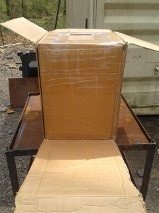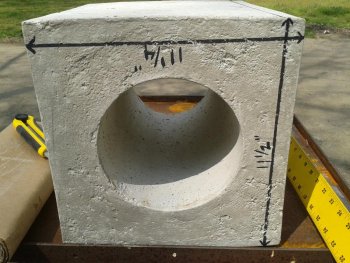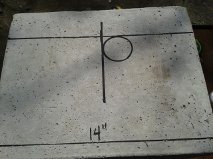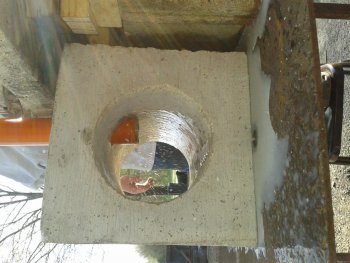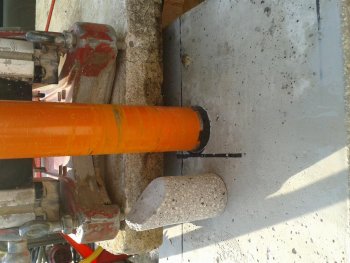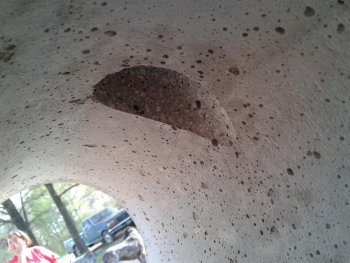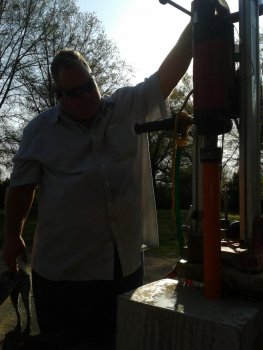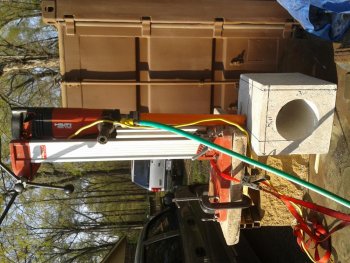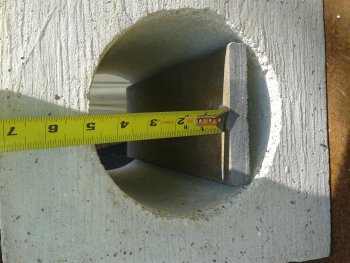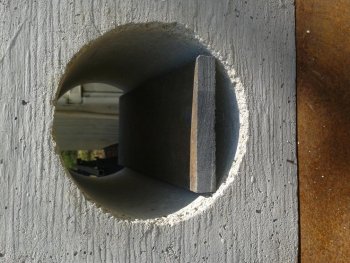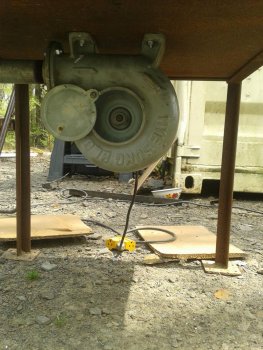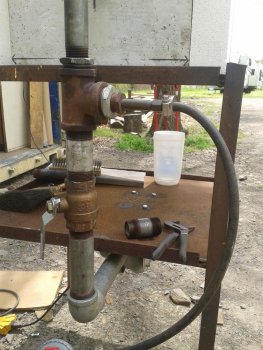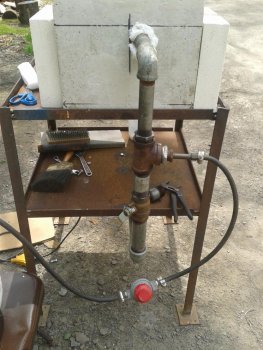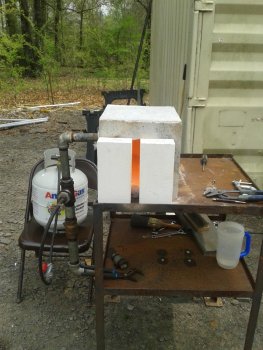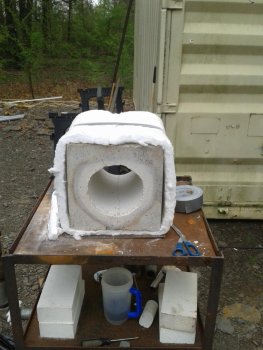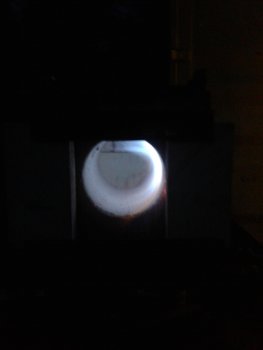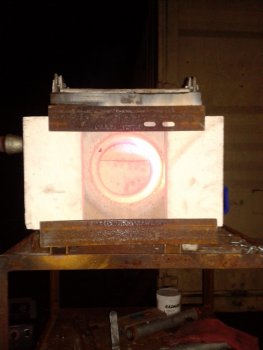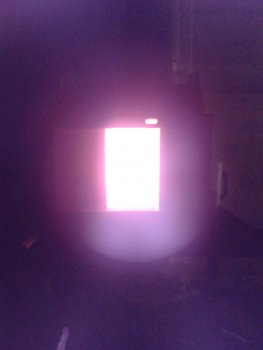Diamond G Knives
Well-Known Member
Started working on a project today that has been sitting for over a year. I had purchased the block and brick last year and just got around to working on it today.
Decided I would take pictures as I went and try to do a WIP. This is my 1st so please bear with me. And as I try to give credit where it is due, this design was inspired by MS Jim Crowell of Mtn View AR. He has one of this style and was kind enough to tell me where to get the parts and study his forge as well as sending me detailed drawings on how it was constructed. Thanks Jim!
The forge body is a hard cast refractable rated for 3000 degrees. It is specifically made as the flame holder for an industrial furnace. It is 14" long X 11 1/4" square with an inside bore of 6 1/2" wide.
I was puzzling over how to drill a hole into a hard cast body, first thought buy a concrete core drill = $197 = No Go. Then a cabinet shop that did granite counter tops = they would not do it, they wouldn't say why. Then I called a rental company, Central Rentals in Russellville, rented a core drill and 2" bit (smallest they had) on a 4 hour rental for $55. This took longer to set up than to drill the hole! I have the hole cut tonight, and decided to call it a day.
My plan is to build a outer box for the forge body from some thin plate I have, leaving enough space to wrap the entire block in koawool. My thoughts are that a metal box will protect the block as well as give me a base to mount the fitting needed to hold the gas/air inlet in place. The front and back will be made of fire brick with an angle iron frame to hold the brick in place. May modify the door at a later date after some trial runs.
More to follow.
Thanks and God Bless,
Mike
Decided I would take pictures as I went and try to do a WIP. This is my 1st so please bear with me. And as I try to give credit where it is due, this design was inspired by MS Jim Crowell of Mtn View AR. He has one of this style and was kind enough to tell me where to get the parts and study his forge as well as sending me detailed drawings on how it was constructed. Thanks Jim!
The forge body is a hard cast refractable rated for 3000 degrees. It is specifically made as the flame holder for an industrial furnace. It is 14" long X 11 1/4" square with an inside bore of 6 1/2" wide.
I was puzzling over how to drill a hole into a hard cast body, first thought buy a concrete core drill = $197 = No Go. Then a cabinet shop that did granite counter tops = they would not do it, they wouldn't say why. Then I called a rental company, Central Rentals in Russellville, rented a core drill and 2" bit (smallest they had) on a 4 hour rental for $55. This took longer to set up than to drill the hole! I have the hole cut tonight, and decided to call it a day.
My plan is to build a outer box for the forge body from some thin plate I have, leaving enough space to wrap the entire block in koawool. My thoughts are that a metal box will protect the block as well as give me a base to mount the fitting needed to hold the gas/air inlet in place. The front and back will be made of fire brick with an angle iron frame to hold the brick in place. May modify the door at a later date after some trial runs.
More to follow.
Thanks and God Bless,
Mike
Last edited:


